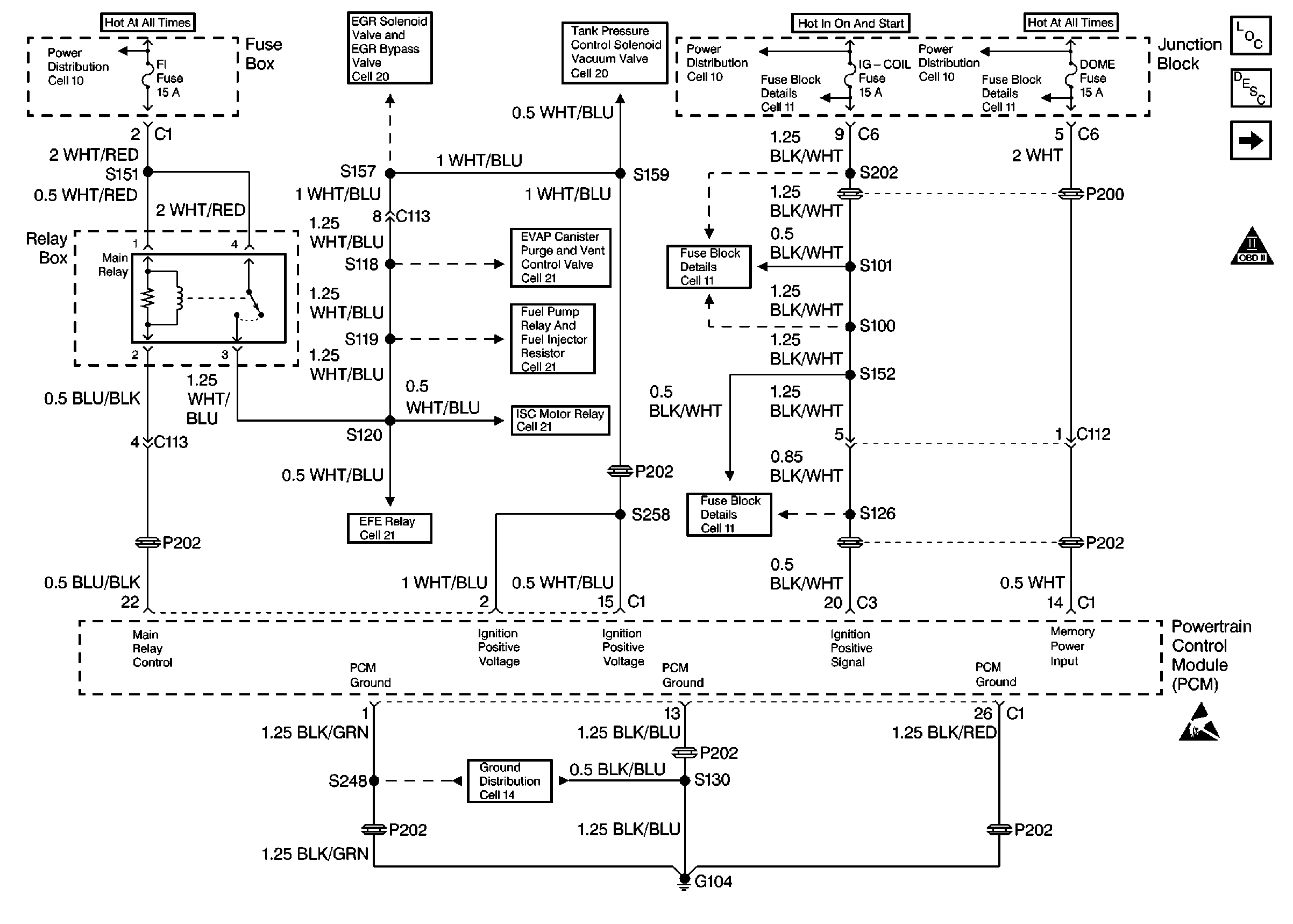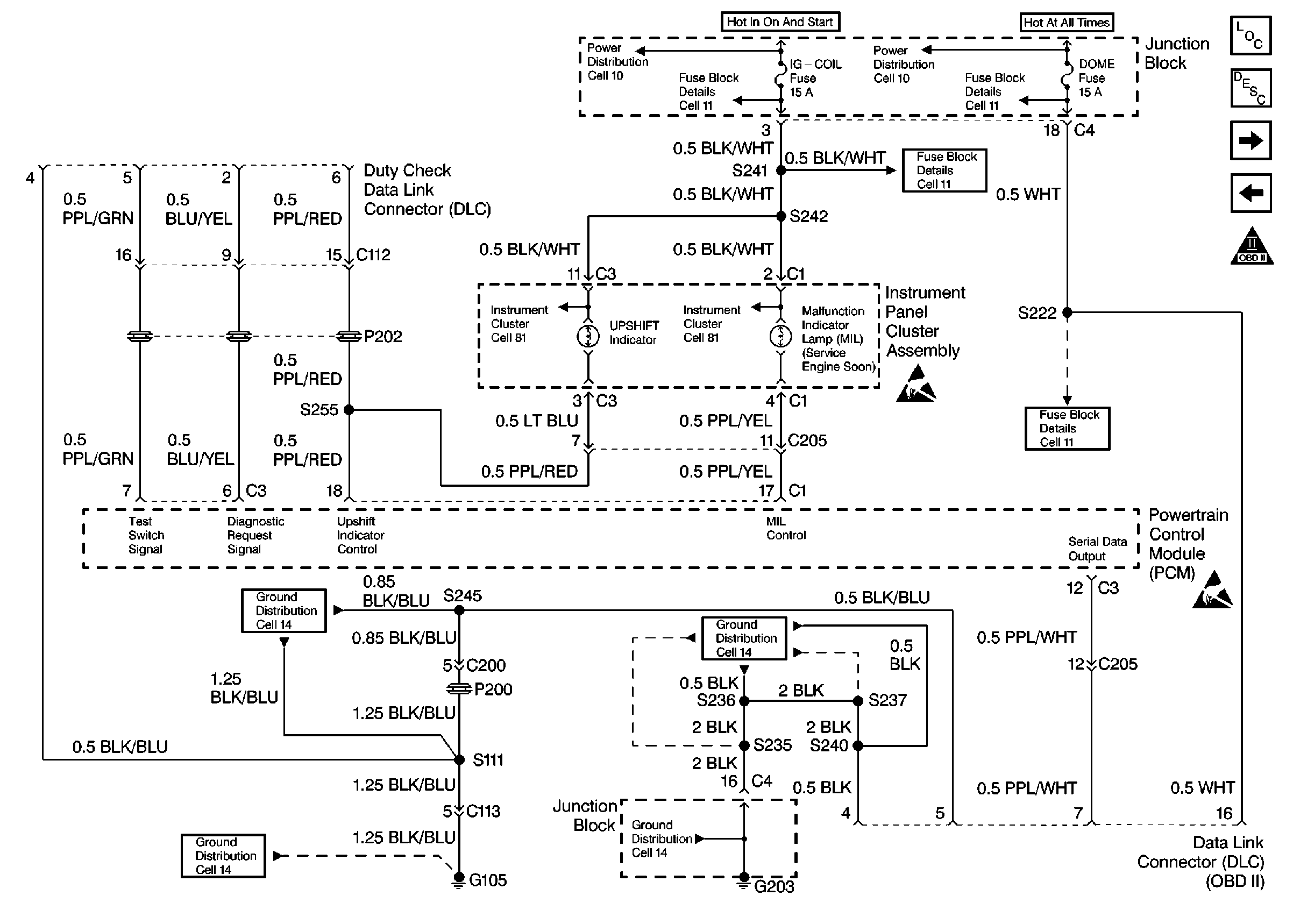Refer to
PCM Power and Ground

and
PCM Data Link Connector (DLC) and Malfunction Indicator Lamp (MIL)

.
Description
The Powertrain OBD system check is an organized approach to identifying a problem that is created by an engine control system malfunction. The Powertrain OBD System Check is the starting point for diagnosis of any driveability concern. The system check directs the service technician to the next logical step in diagnosing the concern. Understanding the table and using the table correctly will reduce diagnostic time, and prevent the replacement of good parts.
DO NOT perform this check if a driveability concern is not present.
Diagnostic Aids
Check for faulty electrical connections to the PCM.
An intermittent malfunction may be caused by a problem in any of the engine control electrical circuits. Inspect the PCM, the wiring harness, and the engine control components for any of the following conditions:
| • | Backed out terminals |
| • | Incorrect mating of terminals |
| • | Broken electrical connector locks |
| • | Incorrectly formed terminals or damaged terminals |
| • | Faulty terminal-to-wire connections |
| • | Physical damage to the wiring harness |
| • | A broken wire inside the insulation |
| • | Corrosion of electrical connections, of splices, or of terminals |
Test Description
The numbers below refer to the step numbers in the Diagnostic Table.
-
The Powertrain OBD system check should not be performed unless one of the concerns noted is present. Failure to follow this procedure could lead to misdiagnosis of the system.
-
The MIL should be on steady with the key on and with the engine off.
-
This step determines if the PCM and the scan tool can communicate.
-
This step determines if the vehicle will start.
-
Before proceeding to the applicable DTC table, consider all of the items below.
| • | Check for related service bulletins. |
| • | If multiple DTCs are stored, refer to the DTC tables by the following priority: |
| 1. | PCM error DTCs P0601 and P0603 |
| 2. | System voltage DTCs |
| 3. | Component level DTCs |
| 4. | System level DTCs |
| • | First failures of type B DTCs will store in Last Test Failed, but not in History. If the MIL is on and a DTC is stored in History, a current fault is indicated. |
| • | Transmission DTCs are not located in this section. Refer to Automatic Transmission. |
| • | If the scan tool is unable to record DTC information, then record the DTC information on paper. |
-
This step detects a MIL circuit that may be shorted to ground.
-
Before proceeding to Symptoms or to Components, check for related service bulletins. The diagnostic tables in this section are designed for use with a correctly functioning scan tool. If a faulty scan tool is suspected, connect the scan tool to another vehicle in order to verify operation. Serial data communications must be corrected before beginning any other diagnostic procedure. The OBD II serial data may not be transmitted if the system voltage is less than 9.0 volts or more than 16.0 volts. DO NOT clear the DTCs unless directed by a diagnostic procedure. Clearing the DTCs will also clear the Freeze Frame and Failure Records data.
Step | Action | Value(s) | Yes | No | ||||||||||||
|---|---|---|---|---|---|---|---|---|---|---|---|---|---|---|---|---|
|
Important:
Check for one or more of the following conditions:
Did any of the above conditions apply? | -- | Go to Test Descriptions | ||||||||||||||
Is the MIL illuminated? | -- | |||||||||||||||
Does the scan tool display any PCM data? | -- | |||||||||||||||
Start the engine. Did the engine start and run? | -- | |||||||||||||||
Were any DTCs set? | -- | Go to the applicable DTC table | ||||||||||||||
Is the MIL illuminated without any DTCs set? | -- | |||||||||||||||
Compare the scan tool data display with the data values shown in the Engine Scan Tool Data List. Are the displayed values normal or within the typical values range? | -- | Go to Symptoms | Go to the Diagnostic Aids of the DTCs related to that component |
